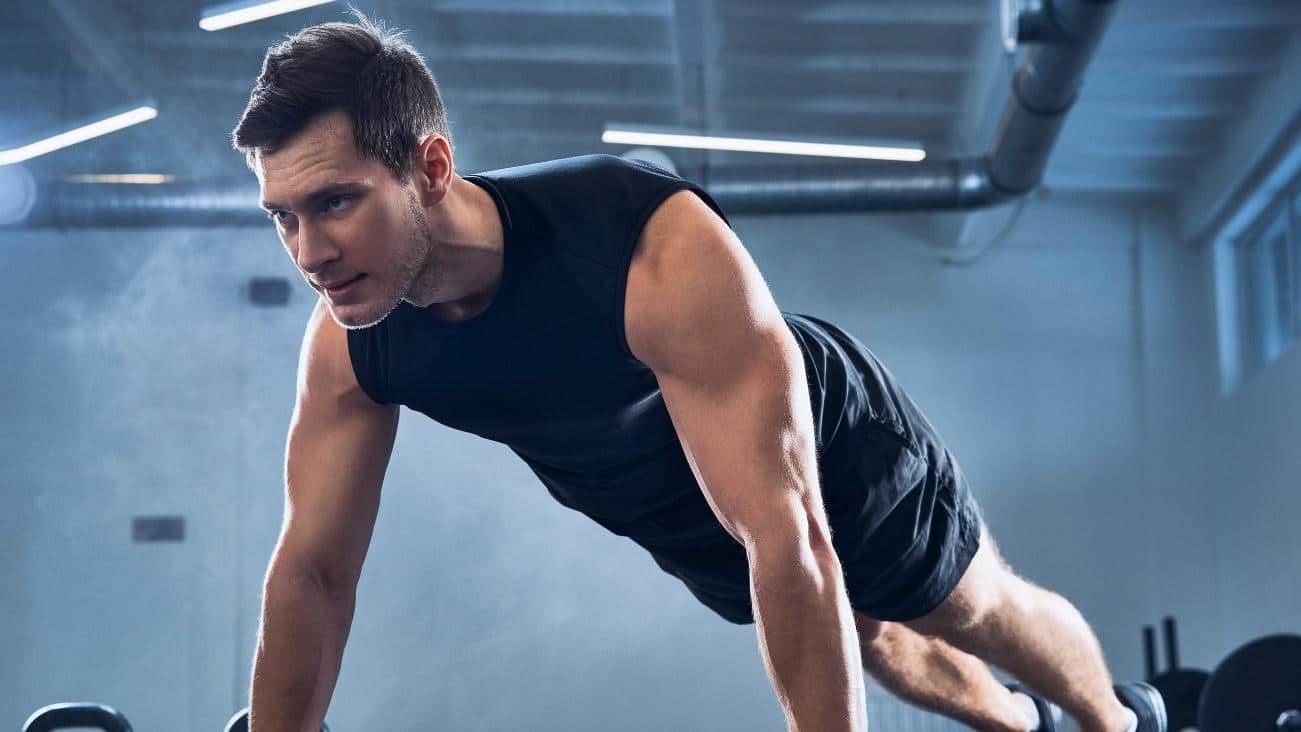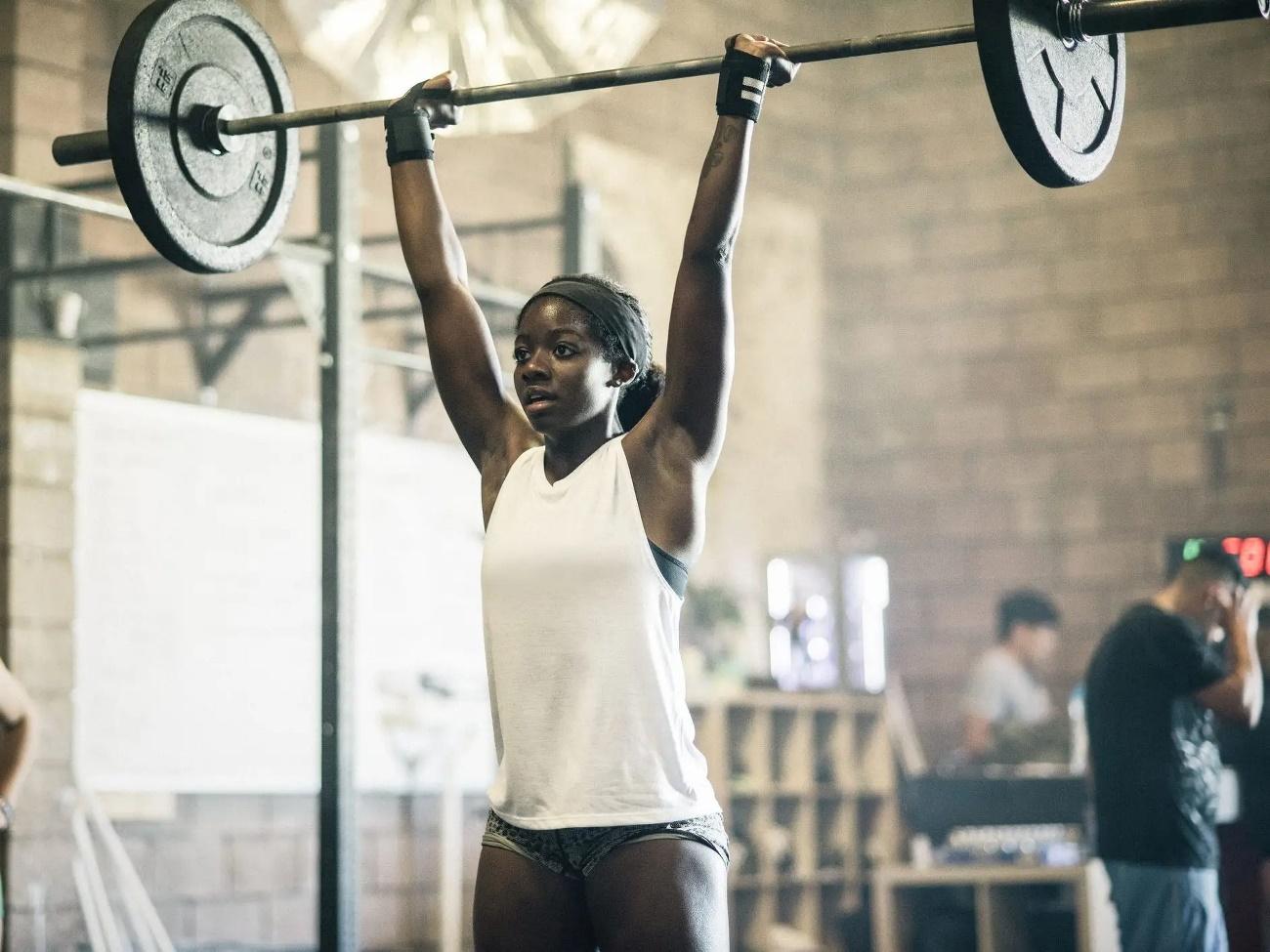26 de August de 2023
How To Get Stronger Without Getting Bigger
The gains in muscle mass and muscle strength are closely interconnected. Generally, greater muscle mass will result in greater strength. This is understandable when considering a very basic principle: strength equals mass times acceleration. Therefore, to have more strength, one must have more mass or move it more rapidly. This is why individuals with a significant amount of mass (even if it’s not purely muscle mass) often possess more strength.

In the realm of athletic performance, there has always been a tendency to believe that increased muscle mass might lead to reduced movement speed, diminished reaction capacity, or poorer performance. While this assertion has some theoretical basis, it doesn’t hold true in all cases. For instance, in soccer, it’s been traditionally thought that having a substantial muscle mass doesn’t play a decisive role. In fact, if we’re purists, greater muscle mass shouldn’t have either a positive or negative impact on ball performance.
However, as sports evolve, not just in soccer but across various disciplines, improved body composition, increased muscle mass, and greater muscle strength correlate with enhanced physical performance. This transformation is so pronounced that where we once found soccer players excelling due to their ball control, nowadays an individual with excellent initial power, impressive jumping ability, or high top speed can make an outstanding soccer player.
But what if I want to be stronger without gaining more muscle mass? Sprinters in the 100 meters, for example, need to be quite strong to handle the force they exert with each stride. However, they don’t require a significant increase in muscle mass that would add weight and slow them down. Similarly, a pole vaulter needs to run fast and possess considerable strength to extend their entire body, but an increase in muscle mass would hinder them during the flight phase. This is why in many sports, the aim is to improve muscle strength without an accompanying increase in muscle mass.

In today’s blog, we will analyze how we can achieve increased strength without an exaggerated increase in muscle mass. To do so, we will conduct a brief analysis of how muscular strength improves, what variables are targeted for strength enhancement, and how we can keep muscle mass in check.
Differences Between Muscle Mass & Muscle Strength
Muscle strength is directly dependent on the amount of muscle mass we have. In other words, a larger muscle size or a greater number of fibers result in greater muscle strength. Mechanically, this makes sense because if I increase the contractile surface area of the muscle, it’s logical that the force it can generate would be greater. If I have a higher number of fibers causing the muscle to contract, the weight I can lift is greater.
However, muscle strength doesn’t always solely depend on the number of fibers we have but also on how they function. To properly understand this concept, we need to discuss two important terms: motor unit and motor neuron. The motor neuron is the end of the peripheral nervous system that innervates the motor unit. The motor unit is a grouping of muscle fibers that, along with the motor neuron, causes the fibers to contract. Information arrives from the central nervous system through the motor neuron that innervates the motor unit, and muscle contraction occurs. There’s a substantial difference in the ability to transmit that signal to the motor neuron between sedentary individuals and active individuals, similar to what happens with motor unit activation (1).
Therefore, it’s possible that even though we have greater muscle mass, muscle strength might not be very high because the neuromuscular system isn’t in the best possible condition. While it’s true that one of the initial adaptations to power training is the improvement in this neuromuscular system, and that’s why a person with the same muscle mass enhances their performance after 3-4 weeks of power training because their recruitment capacity has improved.
Now that we’ve clarified that muscle mass isn’t synonymous with muscle strength, and both need to be trained separately, let’s determine how we can train both capacities and discuss the concept of power, which is essentially applying muscle strength in the shortest time possible.
Training Muscular Strength Without Increasing Muscle Mass
We all have a common type of training in mind for “hypertrophy” or increasing muscle mass. However, to enhance muscular strength, we need to focus on different variables. The appropriate approach involves concentrating on compound and functional movements that recruit a large number of muscle fibers and stimulate the nervous system.
Basic exercises like squats, deadlifts, bench presses, and shoulder presses are excellent choices for developing strength without significantly increasing muscle size. But merely selecting these exercises isn’t enough; we also need to change the way we perform them. We need to focus on increasing the training load and using heavier weights. With proper progression, a substantial improvement in strength can be achieved without excessive growth in muscle size.

The high-intensity training known as HIIT, which stands for “High Intensity Interval Training,” is also a good option for improving muscular strength without an exaggerated increase in muscle mass. If we look at the acronym, HIIT is an interval-based training with high intensity, commonly used for cardiovascular training. For muscular power training, there’s another term more recognized as “High Intensity Functional Training,” where basic exercises for the upper and lower body are combined in a circuit. This approach allows us to increase muscular strength without a noticeable increase in muscle mass.
How is Training Focused on Muscle Mass Gains Different From Hypertrophy Training?
Because the goal of this post is to understand the difference between strength-focused training and muscle mass-focused training, let’s provide a very simple example of what a hypertrophy-focused training would look like, so we can distinguish it.
I don’t mean to suggest that we should steer clear of training aimed at increasing muscle mass. Rather, if we can recognize such training, we can try to adapt it to prioritize strength improvement. To illustrate this, I’ll refer to one of the scientists who has shed the most light on hypertrophy training, Brad Schoenfeld. If you want to learn about hypertrophy, you should read all his articles, as he has devoted a significant part of his career to studying it. Here are some titles and references for you not to miss out:
- The mechanisms of muscle hypertrophy and their application to resistance training (2).
- Dose-response relationship between weekly resistance training volume and increases in muscle mass: A systematic review and meta-analysis (3).
- A systematic review, meta-analysis and meta-regression of the effect of protein supplementation on resistance training-induced gains in muscle mass and strength in healthy adults (4).
- Strength and hypertrophy adaptations between low-vs. high-load resistance training: a systematic review and meta-analysis (5).
In terms of exercise selection, it’s usually quite similar to the exercises used to improve muscular strength. It’s true that when aiming to enhance overall strength, we might use more compound exercises and fewer isolated movements, but in general, the difference isn’t substantial.
However, the major distinction lies in exercise intensity, the number of sets and repetitions. Similarly, the RPE (Rate of Perceived Exertion) or RIR (Reps in Reserve) can vary significantly. While strength-focused workouts might involve 2-6 reps at most, a hypertrophy program could range from 8-15 reps. The RPE for strength lifts usually reaches 9-10, whereas in hypertrophy training, it could hover around 7.5-9. Nevertheless, this doesn’t mean we can’t reach high RPEs during hypertrophy training.

Finally, while in a strength-focused training, you might be lifting weights at around 90-95% of your one-repetition maximum, in a hypertrophy program, the weights typically fall within the range of 75-85% of your one-repetition maximum. All of this is a general guideline; if you have a coach or a training advisor, it’s important to listen to their guidance. In the end, individualization is the key to any training program.
How to Plan a Muscle power training Routine
Here’s a step-by-step plan to kickstart your muscle power training:
Set Your Goals:
Before diving into any training program, it’s crucial to be clear about your goals. Do you want to increase strength, build muscle mass, enhance athletic performance, or simply stay active and healthy? Defining your objectives will guide you in crafting an appropriate training plan.
Choose the Right Exercises:
Opt for exercises that engage various muscle groups and align with your goals. Effective exercise examples include squats, deadlifts, bench press, shoulder press, push-ups, dumbbell rows, and core exercises.
Implement Proper Progression:
Follow suitable sets and repetitions: The specific number of sets and reps will hinge on your goals. To enhance strength, it’s advisable to perform sets of 3 to 5 reps with heavy weights.
Prioritize Rest:
Give your muscles ample time to recover between training sessions. Aim for a rest period of at least 36-48 hours between sessions targeting the same muscle groups.
Listen to Your Body:
While it might seem like common sense, paying extra attention to your body is vital in muscle power training. It’s crucial to heed your body’s signals and avoid overtraining. Proper rest and recovery are indispensable to prevent injuries and maintain long-term progress.

Conclusion
To wrap up, let’s provide a brief summary of the article and reiterate the key points for power training without a significant increase in muscle mass. Remember that both conditions are closely related and it’s challenging for one to exist without the other. With that said, there are various ways to enhance the neuromuscular system. One approach is to improve the signal between the brain and muscles, thereby boosting muscle strength. Additionally, bear in mind that a key distinction between strength-focused training and muscle mass-focused training lies in the intensity of effort and the number of repetitions.
Lastly, let’s remind you of the key aspects of a strength-focused training:
- Setting goals.
- Choosing appropriate exercises.
- Implementing proper progression.
- Getting adequate rest.
- Listening to your body.
If you follow these steps, you’ll achieve improved muscular strength without an excessive increase in muscle mass. And remember, lifting heavy is the best strategy to make yourself stronger every day.
Unai Adrián Pérez de Arrilucea Le Floc’h
References
- Gerchman LB, Edgerton VR, Carrow RE. Effects of physical training on the histochemistry and morphology of ventral motor neurons. Experimental neurology. 1975;49(3):790-801.
- Schoenfeld BJ. The mechanisms of muscle hypertrophy and their application to resistance training. The Journal of Strength & Conditioning Research. 2010;24(10):2857-72.
- Morton RW, Murphy KT, McKellar SR, Schoenfeld BJ, Henselmans M, Helms E, et al. A systematic review, meta-analysis and meta-regression of the effect of protein supplementation on resistance training-induced gains in muscle mass and strength in healthy adults. British journal of sports medicine. 2018;52(6):376-84.
- Schoenfeld BJ, Ogborn D, Krieger JW. Dose-response relationship between weekly resistance training volume and increases in muscle mass: A systematic review and meta-analysis. Journal of sports sciences. 2017;35(11):1073-82.
- Schoenfeld BJ, Grgic J, Ogborn D, Krieger JW. Strength and hypertrophy adaptations between low-vs. high-load resistance training: a systematic review and meta-analysis. The Journal of Strength & Conditioning Research. 2017;31(12):3508-23.

